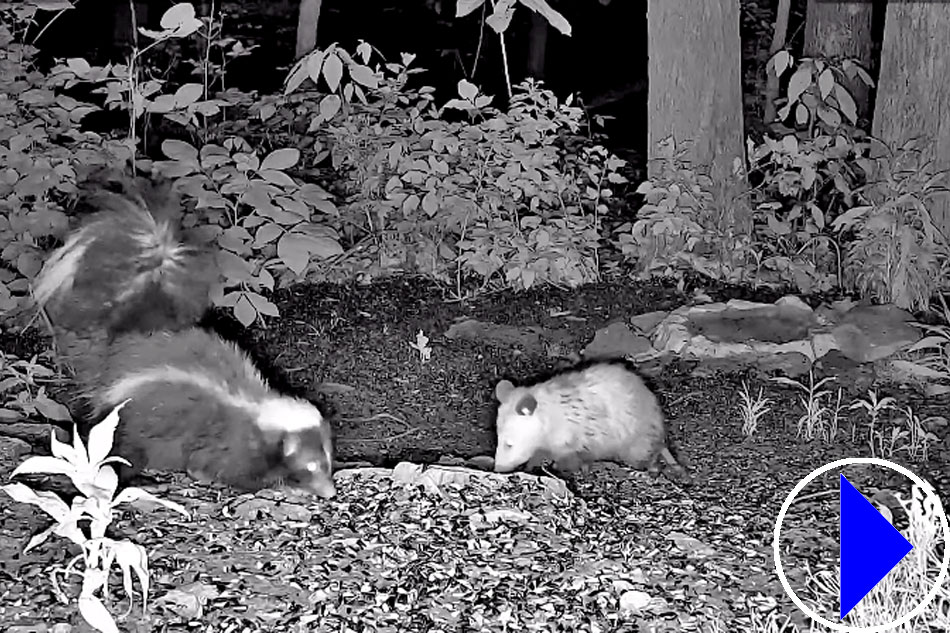
LIVE WEBCAM - OPOSSUMS AND SKUNKS
- Local time
- Location: South western Pennsylvania, United States
- Source: PixCams
-
Info: Live streaming webcam showing opossums and skunks at a feeder in Pennsylvania, United States. The opossums and skunks visit at night - you can rewind the time on the live stream to watch them.
There are squirrels, chipmunks and birds in the daytime.
To watch more live views of small creatures and critters, visit: Live Small Mammal Webcams
More info: The opossum, is the only marsupial in North America. Most members of the order Marsupialia are native to Australia and South America. The opossum’s relatives date back to 90 million years ago. However, the opossum didn’t appear in North America until less than a million years ago.
The name is derived from the Algonquin Indian word apasum, meaning “white animal.” Opossums are creatures without specialized body structure or food preference which enables them to thrive in many settings. The opossum is found throughout Pennsylvania, where it is classified as a furbearer.
The average adult is about the size of a large house cat. An opossum has a long, pointed snout with 50 teeth — the most of any North American mammal. They have small, dark eyes and rounded, bare ears. The tapering tail is naked and scaly. Their feet have five toes, each with a claw, except the first toe of each hind foot, which is long and can grasp like a thumb.
Opossums are opportunistic omnivores and will eat whatever is available to them including insects, lizards, snakes,birds eggs, young birds, berries, mushrooms, acorns and cultivated plants. They will eat garbage and carrion including road kill. They are mostly nocturnal and take shelter in abandoned burrows – opossums do not dig their own den and seldom spend two successive nights in the same place.
Opossum gestation is just 12 or 13 days with an average litter size of 8 young.The fur lined pouch usually has 13 mammary glands so any young in excess of this number die. When they are three to four months old, young opossums begin to look for their own food and care for themselves. Females may bear a second litter, breeding again from mid- May to early July.
Additional Information:

